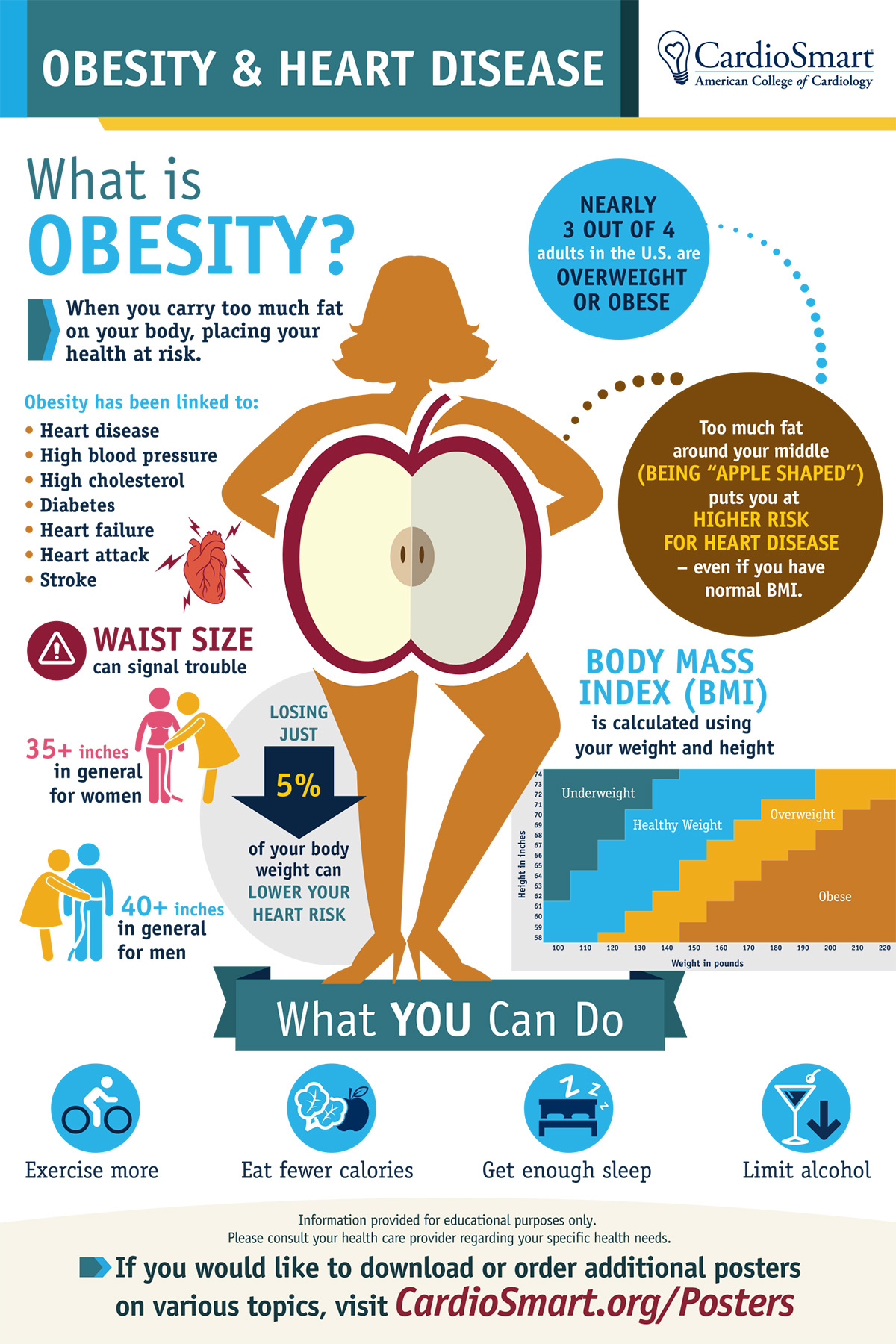CardioSmart | 'Pounding Away' at Obesity
Obesity affects one out of three adults in the U.S. and one in five school-aged children, according to the Centers for Disease Control and Prevention. Not to mention, it is a growing problem in countries around the globe. Being obese raises a person’s risk of many forms of heart disease, as well as other health problems, including hypertension, high cholesterol, heart failure, type 2 diabetes, obstructive sleep apnea and more.
Many factors play a part in the accumulation of extra body fat and ultimately obesity, including lack of exercise poor diet, aging and genetics. For many people, a combination of eating habits and lifestyle factors cause a gradual increase in body fat over time. These same unhealthy patterns can also contribute to other obesity-linked problems, like stress and depression that can, in turn, make it more difficult to eat well and exercise.
Helping patients understand their risk and adjust their lifestyle habits in ways that keep them active, eating healthy and eliminating habits like smoking can help mitigate obesity-related health issues. CardioSmart provides a number of resources, including an Activity Tracker, tips for trimming pounds and a BMI Calculator that can help.
Each individual lifestyle change can result in a 4-5 mm Hg decrease in systolic blood pressure (SBP) and 2-4 mm Hg decrease in diastolic blood pressure (DBP). However, taken as a whole, patients could see a decrease in SBP by approximately 11 mm Hg.
Additionally, having science on your side doesn’t hurt your case either. For example, the new ACC/AHA 2017 High Blood Pressure Guideline recommends weight loss for overweight or obese patients with a heart healthy diet, sodium restriction and potassium supplementation within the diet; and increased physical activity with a structured exercise program. According to the guideline authors, each individual lifestyle change can result in a 4-5 mm Hg decrease in systolic blood pressure (SBP) and 2-4 mm Hg decrease in diastolic blood pressure (DBP). However, taken as a whole, patients could see a decrease in SBP by approximately 11 mm Hg.
Obesity is one of those risk factors where even small changes can have a big impact. As we head into the New Year, helping patients set realistic goals (or even resolutions) can go a long way towards staving off future problems and ensure many, many productive and healthy years to come.
Keywords: ACC Publications, Cardiology Magazine, Child, Blood Pressure, Risk Factors, Diabetes Mellitus, Type 2, Depression, Body Mass Index, Weight Loss, Goals, Diet, Diet, Fat-Restricted, Obesity, Overweight, Hypertension, Feeding Behavior, Exercise, Adipose Tissue, Sleep Apnea, Obstructive, Habits, Heart Failure, Heart Diseases, Smoking, Exercise Therapy, Cholesterol, Potassium, Sodium
< Back to Listings


